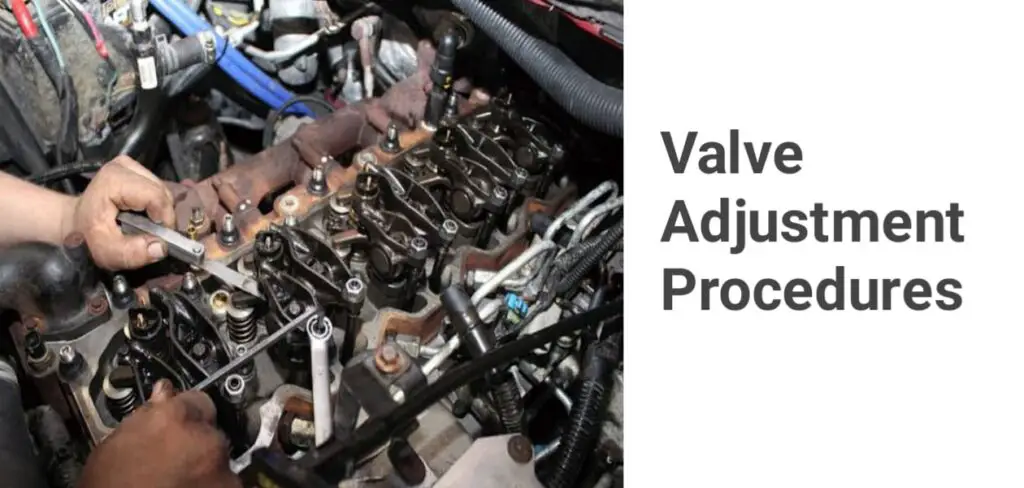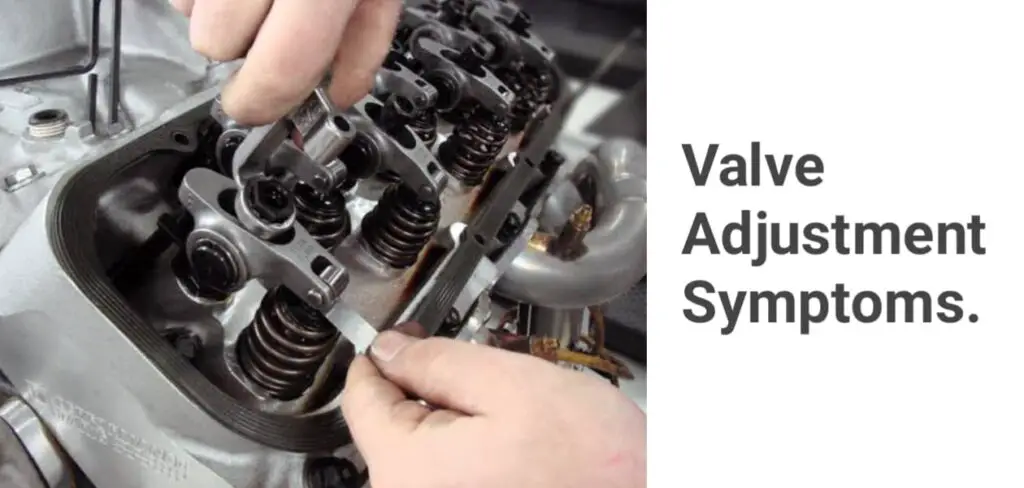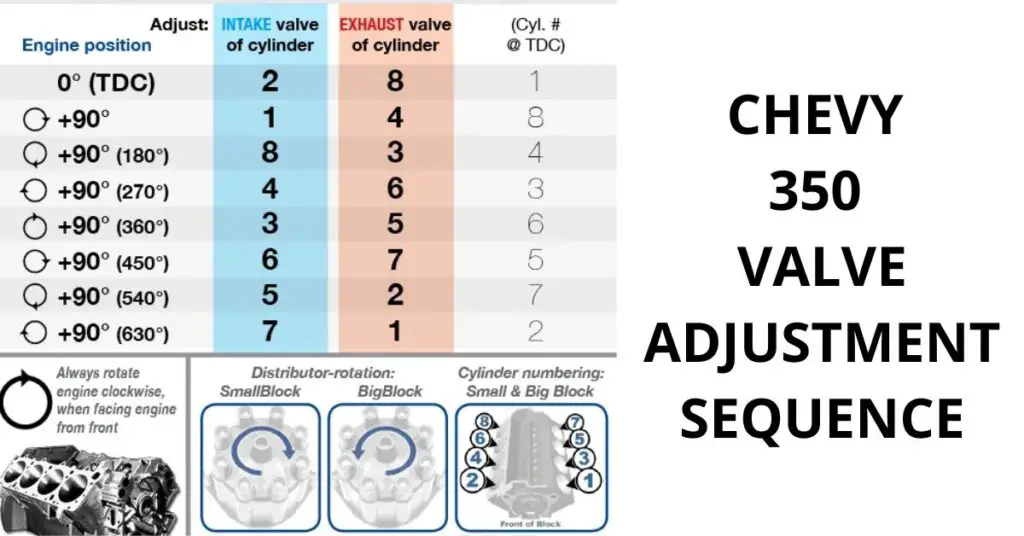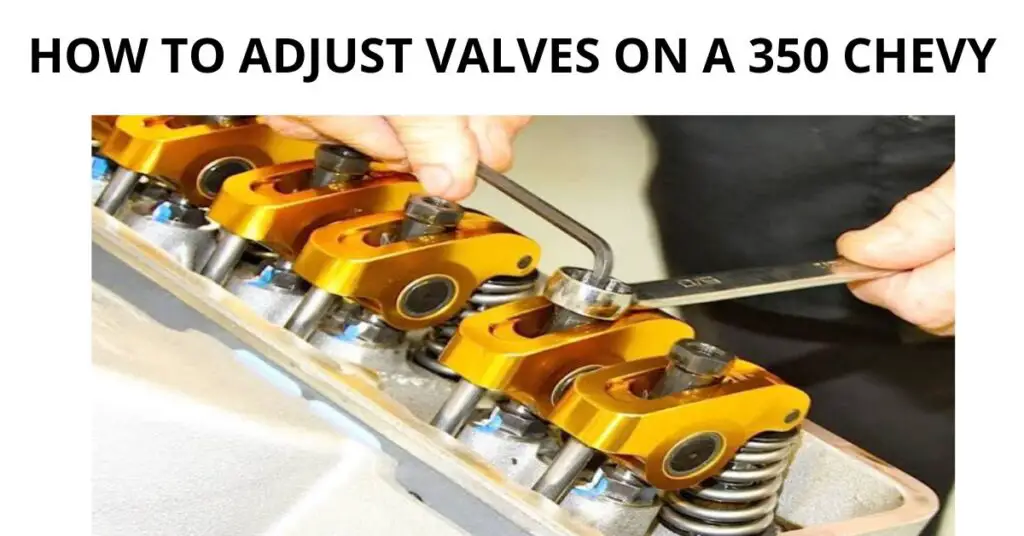I have a 1972 Chevy Malibu that I love to drive. It is a very reliable car with a powerful 350 engine, but recently it is having some problems, and I think it’s a valve issue.
It seems like the valves are not adjusted properly, and I did not want to drive to the shop just for that. So, I decided to adjust my Chevy 350’s valves myself and write a detailed guide for you while doing so.
This detailed guide explains How to Adjust Valves on A 350 Chevy so that you can do it too yourself.
How to Adjust Valves on A 350 Chevy: Step By Step Guide
Here is a detailed guide on how to adjust valves on a 350 Chevy:
- Take off the valve covers before carrying out the valve adjustment. Once the cover is off, choose a cylinder you are going to work on.
- To adjust the intake valve, use your hands to rotate the engine. At the same time, keep your eyes on the exhaust valve of the cylinder.
- Take the intake rocker arm adjuster out of the way and eliminate any strain applied to the pushrod. Give the hydraulic lifter a minute to take up its neutral position.
- Once this occurs, the spring in the lifter will naturally move the pushrod seat up to touch the remaining lock.
- To fix any clearance in the pushrod, gently wiggle the pushrod in an up and down motion while tightening the adjustment nut carefully.
- Once you stop hearing the rattling noise caused by the clearance, that’s an indication that the clearance is no more. At this stage, you have achieved a “zero lash”.
- After this, suspend the adjuster in its position with the poly locks.
- To adjust the exhaust valve, rotate the engine while keeping an eye on the intake valve.
- When the valve is completely open and starts closing, stop rotating the engine and set the exhaust rocker arm on this same cylinder.
- Apply the same steps used in adjusting the intake valve to complete the exhaust valve adjustment.
- Once the valve (intake and exhaust) adjustments for the first cylinder have been completed, use this same procedure to adjust the valves in other cylinders.
You may also like this post on How to Set Timing on Chevy 350 without Timing Light.
How to Adjust Valves on A Chevy 350 While Running?
Though some people prefer carrying out valve adjustments on a cold engine, performing it on a running engine is okay and preferred by some too.

Follow these steps to adjust valves on a running 350 Chevy.
- Warm the engine up to a functioning temperature.
- Remove the valve cover once this temperature (180-200 degrees) has been attained.
- Take out the valve rocker arm but slowly until the rocker starts rattling. Ensure that the engine is running at a slow speed as you carry out this step.
- Take the valve rocker arm nut back in till the rattling noise is terminated similarly. At this point, you have a zero lash.
- Give the nut a ¼ downward turn every 10 seconds interval till the nut gets turned down successfully.
What Are the Symptoms of Valves Needing Adjustment on A 350 Chevy?
Knowing how to adjust valves on a 350 Chevy will be baseless if you don’t know whether your valves need to be adjusted or not.

Here are some symptoms of valves needing adjustments on a Chevy 350:
- Production of rattling sounds; caused by loose valves.
- Overheating of the engine; is caused by the tightness of the valves.
- Increase in combustion rate/fuel consumption.
- Pre-ignition of the engine.
- Poor performance of the engine.
- A sudden “turn-on” of the engine light.
- The engine jerks while the car is moving.
Where Are Intake and Exhaust Valves on A Chevy 350?
The intake and exhaust valves on a Chevy 350 are both located in the cylinder head of the internal combustion engine.
Check this 350 Chevy Engine Diagram to know the exact locations of these valves.
The major function they perform is controlling the gas flow in the engine through the combustion chamber with the intake valve specializing in taking in air while air release is carried out by the exhaust valve.
The valve sits firmly on the valve seat once it is shut. Thereby terminating airflow in the engine.
When opened, it stays apart from the valve seat. Thus, providing access for air to pass through.
The features of the intake and exhaust valves consist of a hardened metal material that can resist the intense conditions of the combustion chamber.
They are specifically designed to only allow up and down movements. Also, the intake valve is usually bigger than the exhaust valve in size.
Understanding how to adjust valves on a 350 Chevy is important because faulty intake and exhaust valves can cause significant damage to the engine.
Chevy 350 Valve Adjustment Sequence

- Each engine turn should be made at a 90-degree clockwise motion successively.
- Firing order: 1 8 4 3 6 5 7 2
Splitting the firing order into a fraction with the last 4 digits below will produce a sequence for valve adjustment.
The fraction will look like this:
1 8 4 3 / 6 5 7 2
Following the split firing order, each cylinder at the upper part of the fraction is at the top dead center (TDC) when the corresponding cylinder at the lower part is at the TDC.
One of the two cylinders will be on the exhaust stroke while the other will be on the compression stroke.
This means that you can adjust cylinder 1 when cylinder 6 is at the TDC, cylinder 5 when cylinder 8 is at the TDC, etc.
Similarly, you can adjust the intake valve of the cylinder when the exhaust valve of that cylinder is at the TDC and vice versa.
The valves have to be adjusted using the EIIEEIIE sequence (Exhaust-Intake, Intake-Exhaust, Exhaust-Intake, Intake-Exhaust).
This implies that; E I E I / I E I E sequence follows the 1 8 4 3 / 6 5 7 2 firing order.
How Do You Set Valve Lash on SBC 350?
Valve lash adjustment can easily be carried out with the EOIC method. This is a major method among the different steps on how to adjust valves on a 350 Chevy.
It simply stands for Exhaust Opening and Intake Closing.
Follow these steps to set Valve Lash on SBC 350:
- Pull off the valve cover to have access to the rocker arms.
- To set the lash in the intake valve, start rotating the engine and stop once the exhaust valve starts opening.
- Inspect the lash between the intake valve stem and the rocker arm to know if it is inappropriate.
- Use the adjuster on the rocker arm till you achieve the right thickness measurement between the intake valve stem and the rocker arm if it is inappropriate.
- Lock the adjuster in place with a poly lock once the right thickness measurement has been achieved.
- To set the lash in the exhaust valve, start rotating the engine again.
- When the intake valve is completely open and has commenced closure, set the lash on the exhaust valve using the same procedures in the intake valve lash setting.
- Perform the same operation on other cylinders.
Conclusion
At this stage of reading this article, I hope that you have understood how to adjust valves on a 350 Chevy.
I also hope that other issues related to understanding how to adjust valves on a 350 Chevy discussed in this article have been of great help.

